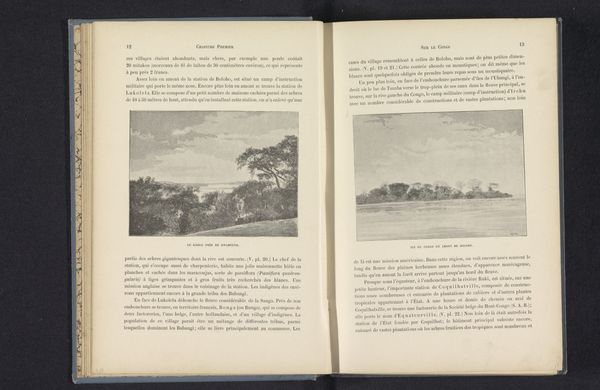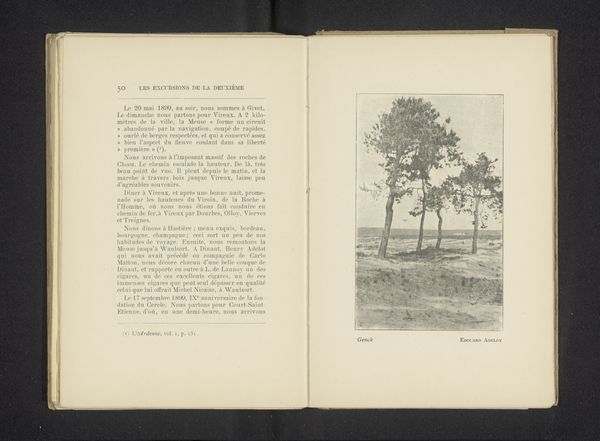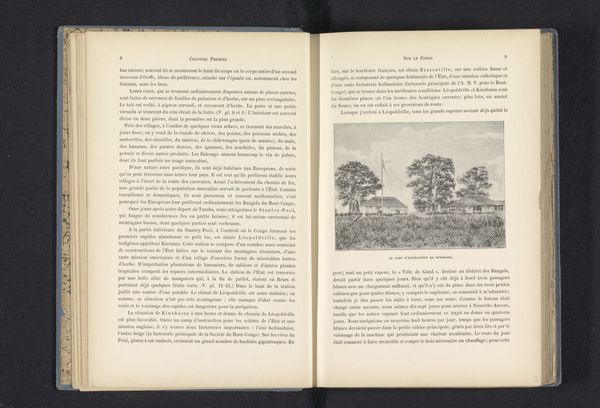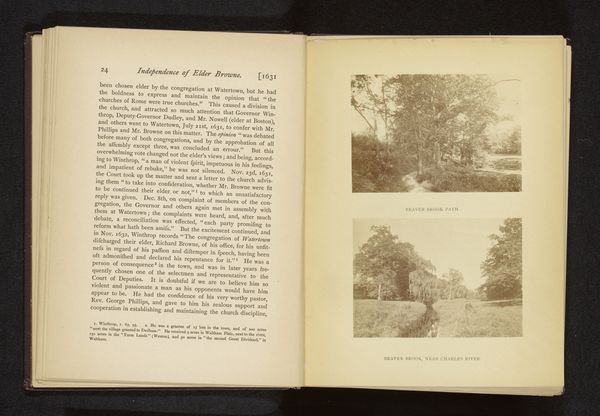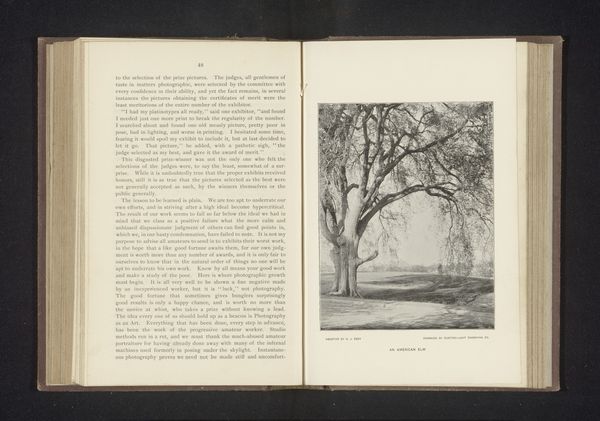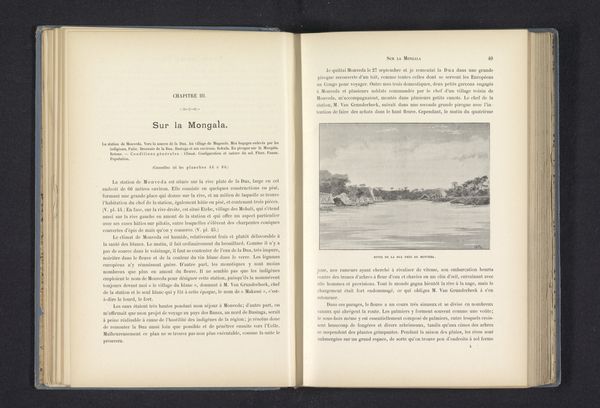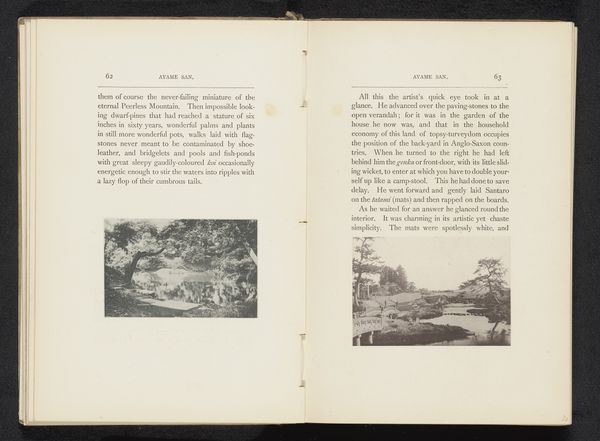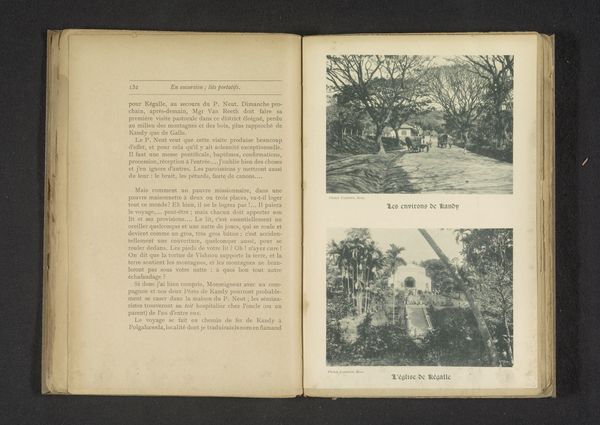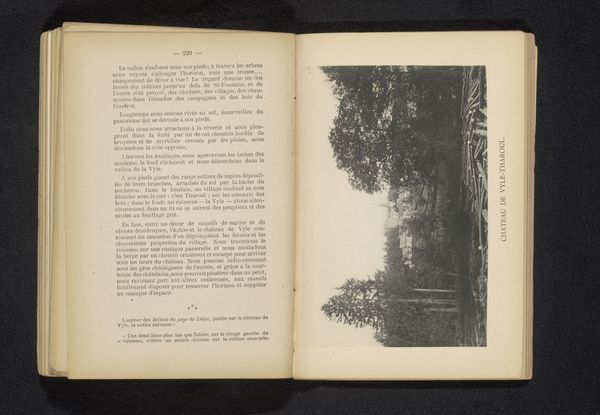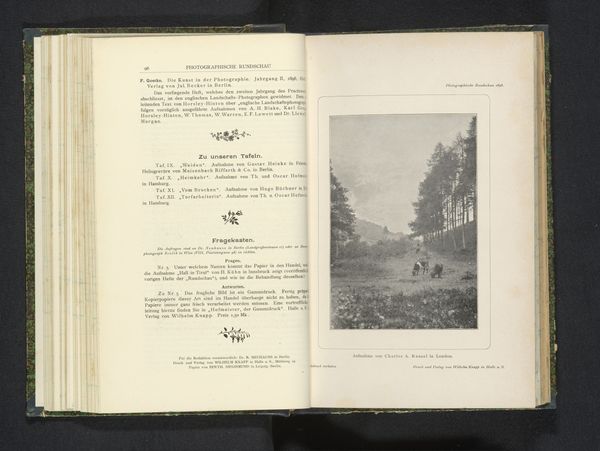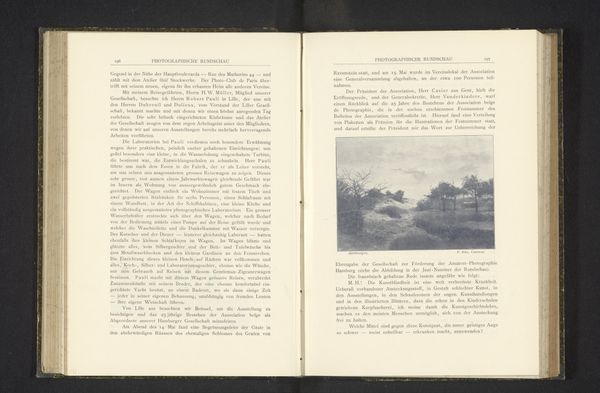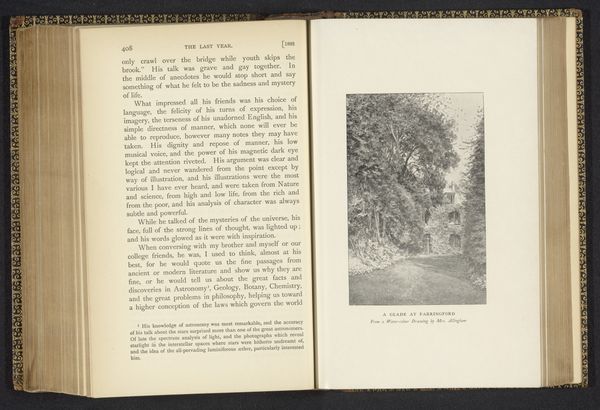
Fotoreproductie van een tekening, voorstellende de Congorivier te Lukolela before 1899
0:00
0:00
print, paper, photography, engraving
# print
#
landscape
#
river
#
paper
#
photography
#
orientalism
#
genre-painting
#
history-painting
#
engraving
Dimensions: height 118 mm, width 87 mm
Copyright: Rijks Museum: Open Domain
Curator: Allow me to introduce you to an intriguing photogravure: "Fotoreproductie van een tekening, voorstellende de Congorivier te Lukolela," which translates to "Photoreproduction of a Drawing, Representing the Congo River at Lukolela," dating from before 1899. Editor: There's an almost ethereal quality to this image. The contrast is sharp, dividing the scene into layers. A detailed foreground then fading out to the distance with precision, yet it feels as though the entire composition is striving for a kind of harmonic arrangement of black and white shapes. Curator: Yes, the formal structure is quite striking. Notice how the artist uses the verticality of the trees in the foreground to frame the expansive river view. The stark monochromatic palette reduces the scene to its bare essentials—line, shape, and texture—allowing us to really analyze spatial relationships between planes within a two-dimensional framework. Editor: But beyond the shapes, look at the work it represents: the physicality of the engraving process itself is fascinating here. Imagine the labor involved in both creating the initial drawing and then translating that onto a printing plate. We must consider too, the potential social narratives embedded in this image. Who created it? What was its intended audience? Who printed the image? Curator: Those questions prompt a very valid inquiry. From the vantage point of formalism, these external considerations are helpful yet largely inconsequential because the essence of art, to my perspective, is primarily evident within its inherent elements rather than its historical provenance. I am of course not diminishing how helpful this information is—merely contextual. Editor: While that may be, I believe dismissing production and labor, dismisses the core of human experience embedded in its realization. How does this context modify your understanding, affect perception? Curator: Admittedly, reflecting on production invites greater sensitivity to materiality and cultural narratives and thus brings heightened intellectual investment—a reminder of the many ways this singular landscape contains various temporal viewpoints. Editor: Absolutely. These perspectives ultimately inform how we relate not only to each other through production means but further influence our perception within the artwork itself; this piece of critical analysis transforms what was an individual viewing into collective engagement.
Comments
No comments
Be the first to comment and join the conversation on the ultimate creative platform.
